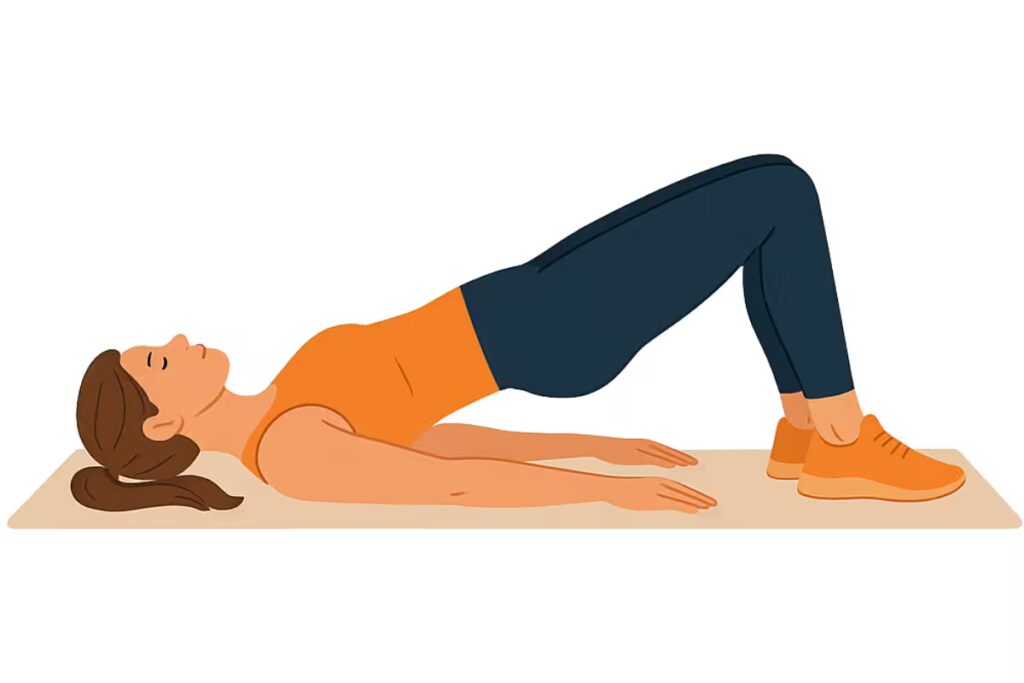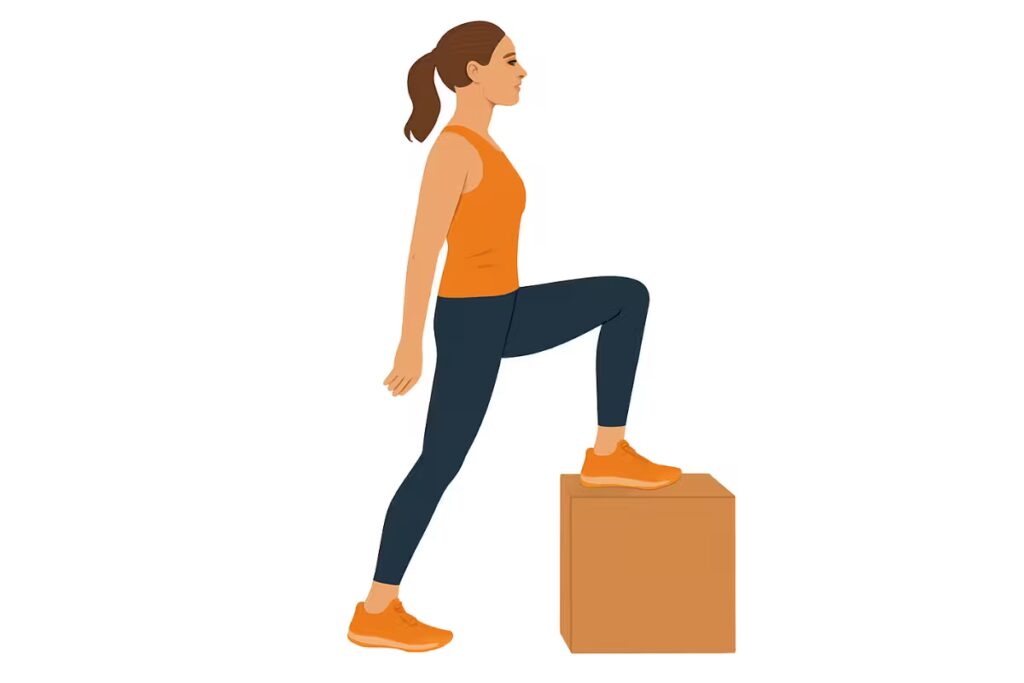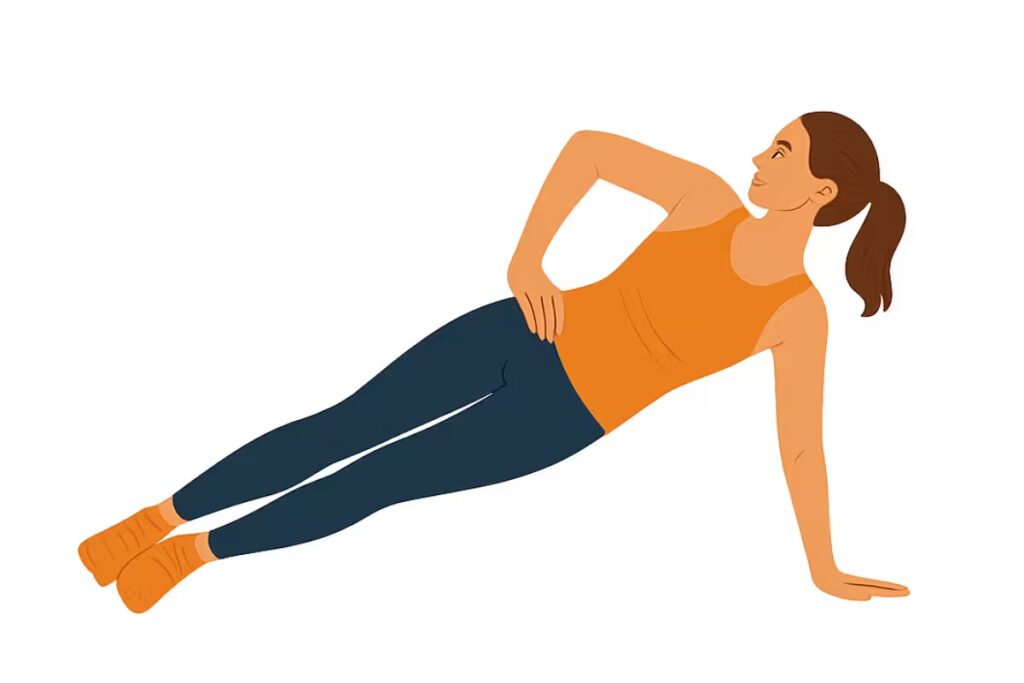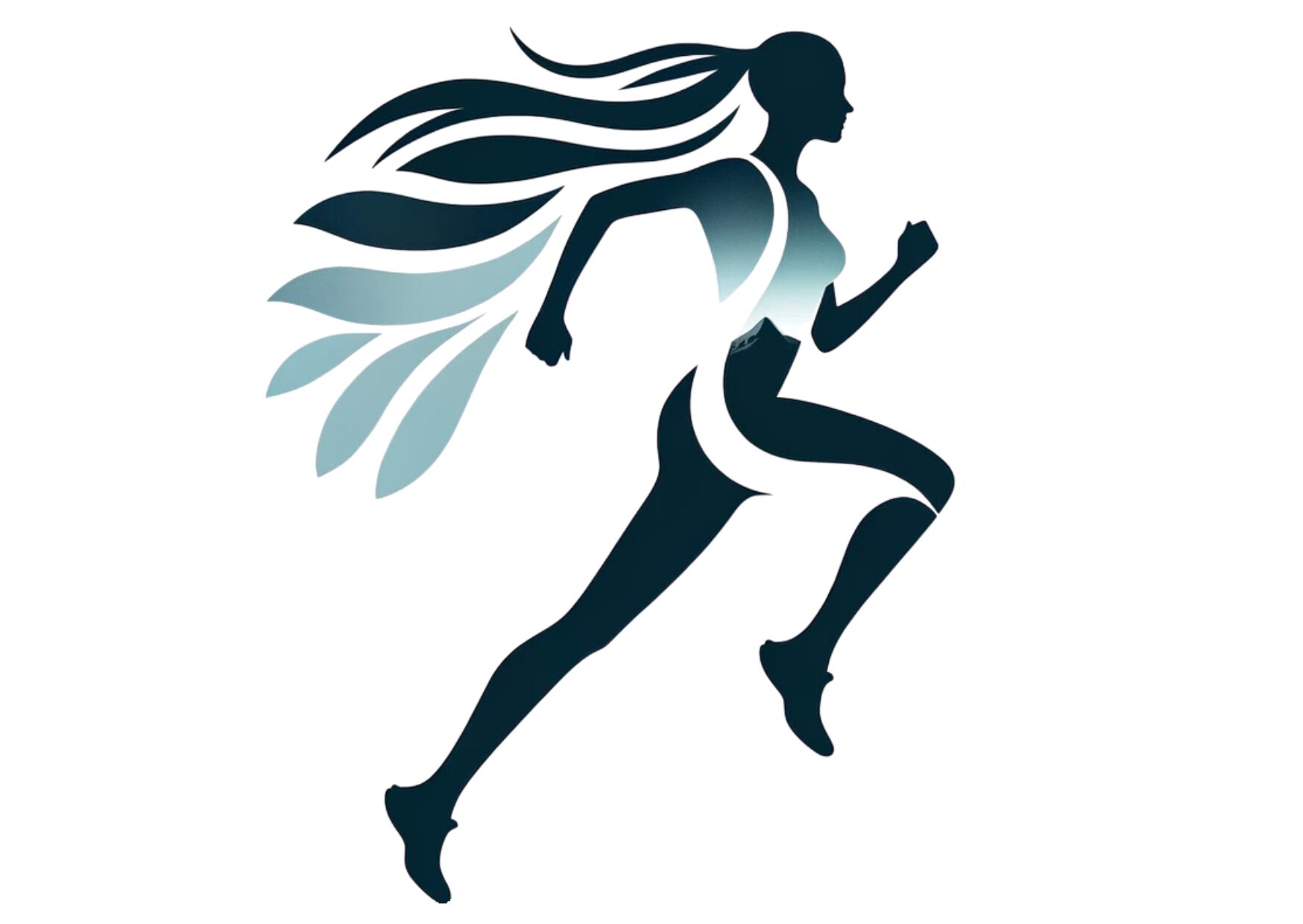If you want to run past your 40’s, strength training is essential. As we age, we naturally lose muscle mass and bone density. This makes us much more prone to getting injured. The good news is that it doesn’t take much to stay strong. Even a few targeted exercises each week can keep you strong, injury-free, and running longer. It doesn’t have to take more than 15 minutes. Here are 3 strength exercises every runner over 40 should do to improve balance, prevent injury, and build running-specific strength in just minutes a week:
1. Glute Bridges

Why it matters:
Your glutes (butt muscles) power your stride and stabilize your hips. If your glutes are weak, you will be more likely to experience knee pain, back pain, and inefficient running.
This exercise mainly works your gluteus maximus, the largest muscle in your backside. But it also strengthens your hamstrings (back of the thighs), lower back muscles (erector spinae), and deep core muscles, which help stabilize your pelvis.
How to do it:
- Lie on your back, knees bent, feet flat on the floor.
- Press through your heels to lift your hips until your body forms a straight line.
- Squeeze your glutes at the top, then lower slowly.
- To also target your gluteus medius, hold your hips up in the bridge position and slowly push your knees apart, then bring them back together. The gluteus medius, is a smaller but super important muscle on the outside of your hip that helps with balance, pelvic stability, and injury prevention, especially for runners. Do 10–15 slow pulses like this at the top of each bridge set.
Do 2–3 sets of 10–15 full reps (lifting your hips up and down), and finish each set with 10 slow knee pulses at the top.
Want more challenge?
Add a resistance band around your thighs or hold a dumbbell on your hips.
2. Step-Ups

Why it matters:
Builds the single-leg strength you need for running, whether you’re on roads, trails, or hills. Also improves balance, core control, and joint stability.
How to do it:
- Step up onto a bench or sturdy box with your right foot.
- Push through your heel to stand up tall.
- Step down and repeat on the left side.
2–3 sets of 8–12 reps per leg.
Want more challenge?
- Try holding dumbbells at your sides to increase resistance.
- For an extra challenge that builds explosive strength and mimics the running motion, try jump step-ups:
Place one foot on the box, and keep the other on the ground. Push off the floor with power, driving through your front leg to launch into a jump at the top, lifting your back knee up as if you’re running mid-air. Land softly on the box with control, then step down and repeat on the other side.
This variation trains strength, coordination, and running-specific power.
3. Side Plank (with Leg Lift if You’re Feeling Strong)

Why it matters:
Targets your obliques and hip stabilizers. These are key muscles for maintaining good form (holding up your upper body), especially when you’re tired. A strong core prevents injuries by keeping your pelvis steady, improving balance, and reducing strain on your back and knees, all crucial for staying efficient and pain-free on longer runs.
How to do it:
- Lie on your side, propping yourself up on one forearm.
- Stack your feet and lift your hips.
- Hold for 20–30 seconds. Switch sides.
Repeat 2–3 times per side.
Too easy? Raise your top leg a few inches and hold it.
Too hard? Rest your bottom knee on the ground to make the side plank easier and more stable.
Final Tips
To get the full benefits of the 3 strength exercises every runner over 40 should do, consistency is key, but you don’t need to spend hours in the gym.
- Aim to do these exercises 2–3 times per week. Even just 10–15 minutes is enough to build strength, improve stability, and support your running.
- Focus on quality over quantity. Controlled movements with good form are far more effective (and safer) than rushing through reps.
- Combine your strength sessions with: Regular mobility work (like stretching, foam rolling, or yoga), Plenty of rest and recovery, A balanced running schedule that includes easy runs, rest days, and variety. Together, this well-rounded approach will help you run stronger, stay injury-free, and enjoy running well into your 40s, 50s, and beyond.
Bonus: Why Strength Training Matters More After 40
As we get older, our bodies naturally go through changes, like; slower recovery, muscle loss (sarcopenia), and hormonal changes that can affect strength, energy, and performance. That doesn’t mean you have to slow down, but strength training becomes more important after 40, especially if you want to keep running strong and injury-free.
Here’s why:
Helps prevent injuries like runner’s knee, IT band syndrome, and lower back pain
Stronger muscles support your joints and absorb more impact from your running. This reduces the strain on your knees, hips, and spine.
Improves running efficiency and power
A strong posterior chain (glutes, hamstrings, calves) helps you run with better form, push off more powerfully, and maintain speed without wasting energy.
Supports bone density and joint stability
After 40, bone density naturally declines, especially in women. Strength training (even bodyweight exercises) stimulates bone growth and helps prevent osteoporosis. It also improves the stability of joints like knees, hips, and ankles, which makes running safer and smoother.
Boosts confidence and body image
Feeling strong has a way of carrying over into every area of your life. As your body becomes more toned and capable, many women report feeling more empowered, confident, and connected to themselves.
In short:
If you want to keep running well into your 40s, 50s, and beyond, strength training isn’t optional. It’s your secret weapon.

